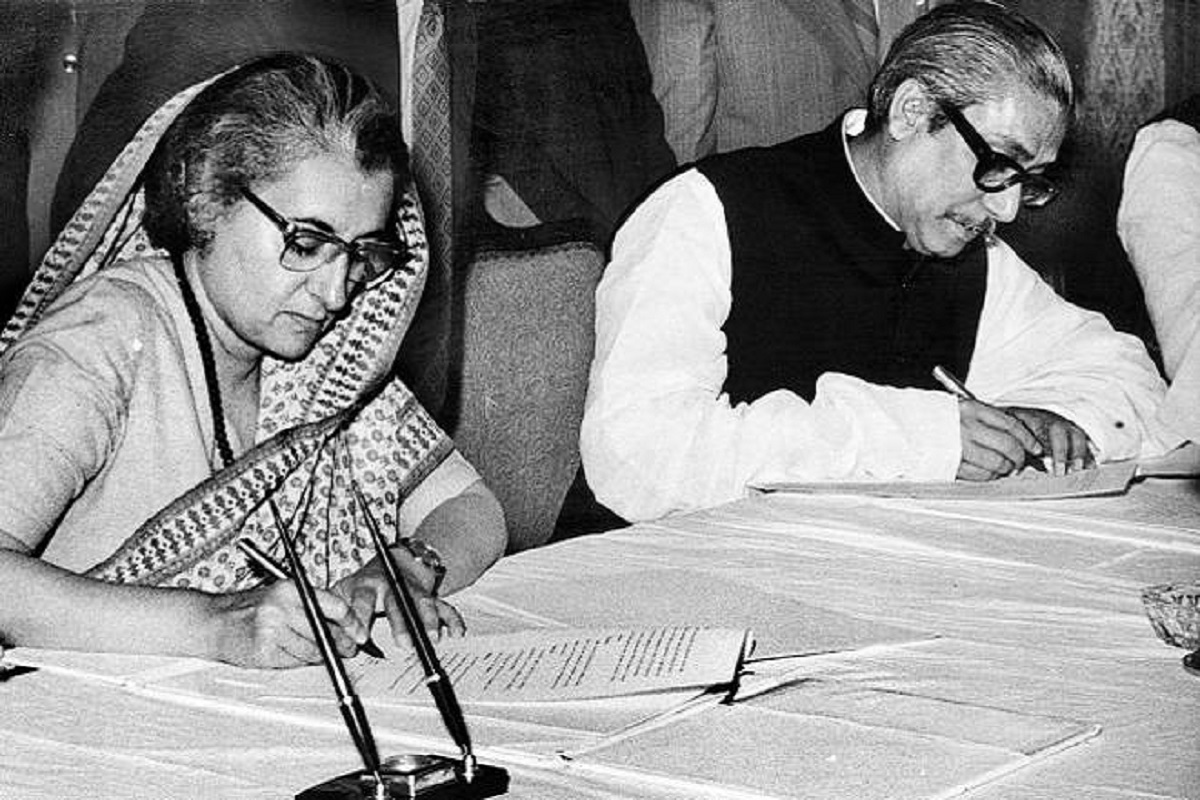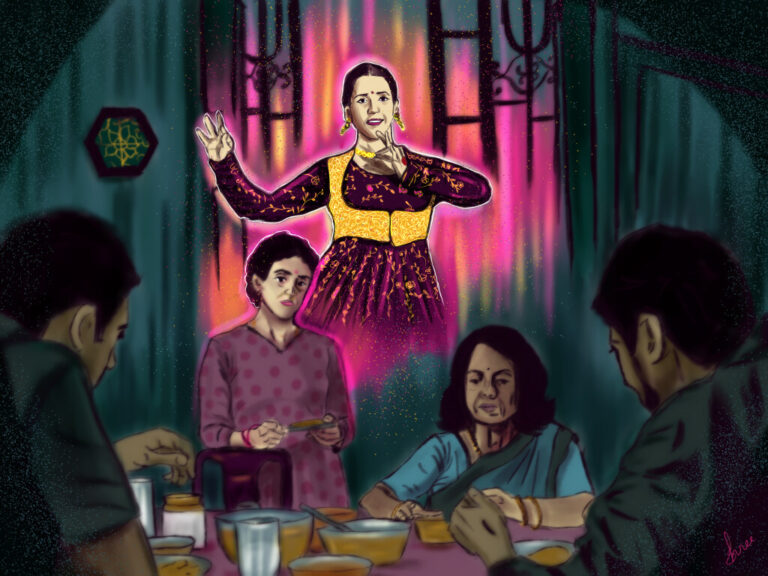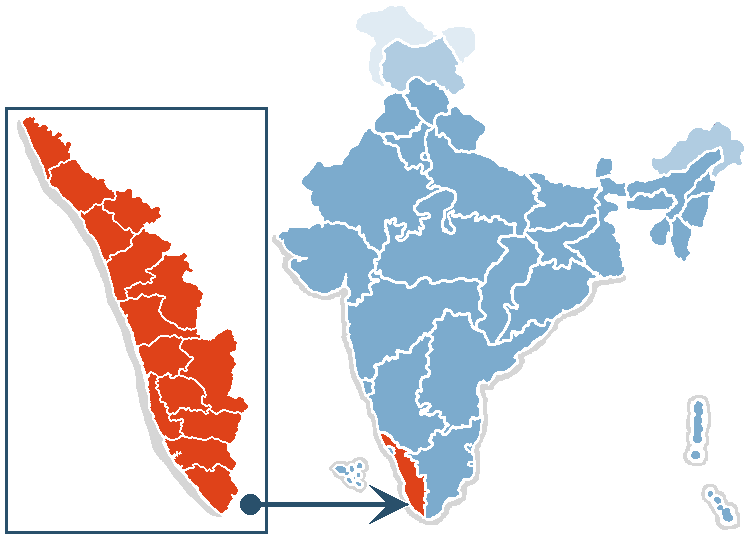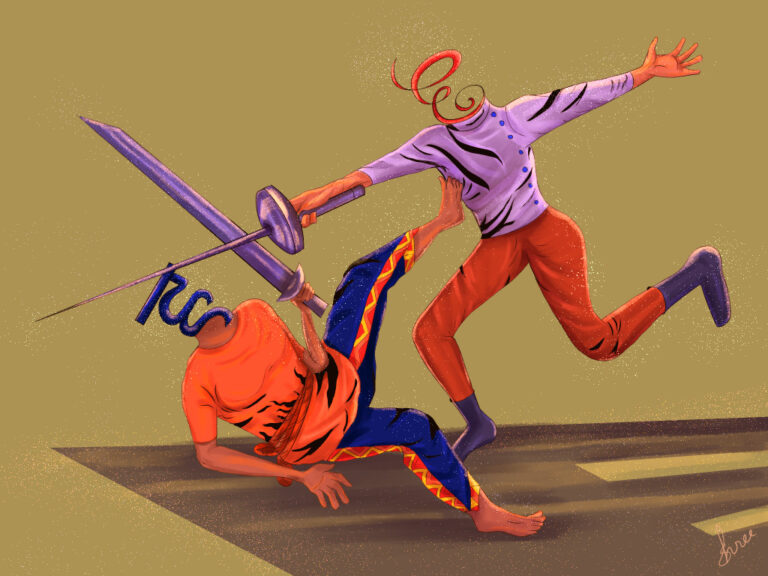Indira Gandhi and the Birth of Bangladesh

Sucharita Sen is a PhD Candidate and a Teaching Assistant at Victoria University of Wellington, New Zealand.
I am glad to inform you that in the light of the circumstances which prevail at present, the Government of India has decided to grant the recognition. This morning, I made a statement on the subject in our Parliament.
Quoted from a letter by Mrs. Indira Gandhi, Prime Minister of India, to Tajuddin Ahmed, Prime Minister of Bangladesh government-in-exile, December 1971 (Gandhi, 1972).
Indira Gandhi stepped into the office of Prime Minister with a strong legacy. Her father was a leading figure in the Indian National Movement and the first Prime Minister of independent India. With strong roots in Indian Politics, Gandhi went on to become the second longest serving Prime Minister of India and was hailed as the ‘women of the millennium’ (BBC, 1999), being placed in the top 100 powerful women of the twentieth century (Economic Times, 2020). In this article, I will focus on the role played by her in aiding the liberation war of Bangladesh.
Indira Gandhi’s Contribution in the Public Discourse in Bangladesh
Indira Gandhi’s decisive support to the liberation of Bangladesh has been a much-discussed topic in Bangladesh. But it has predominantly been limited to the private sphere. Its details have been missing in the public discourse. This conspicuous absence, argues Serajul Islam, can be attributed to a taboo in the country about giving Indira Gandhi and India too much credit for the independence of Bangladesh. A possible reason for this could be the overwhelming belief in the idea that credit to Indira Gandhi might overshadow the importance of Bangabandhu Sheikh Mujibur Rahman’s leadership in the struggle. Rahman had successfully united the East Pakistanis as a monolith and in prepared them to sacrifice their lives for their freedom and independence (Islam, 2020). In this context, I suggest that while Bangabandhu’s leadership goes unmatched in his unparalleled stewardship in the domestic sphere, Indira Gandhi’s support on the international front was also instrumental in guaranteeing the liberation of Bangladesh. In December 2019, a senior political official at the Prime Minister’s Office while speaking at the Victory Day celebrations of the Bangladesh Deputy High Commission, observed that Indira Gandhi and India’s support had led Bangladesh’s liberation war to success (Islam, 2020).
The Liberation War – Violent Beginnings
The East Bengali population had various reasons for disenchantment with the existing government of Pakistan. The centralisation of power in a military-bureaucratic coalition, lop-sided economic development in favour of West Pakistan left the impression of colonisation and marginalisation among the East Bengalis. It was widely alleged that the east Pakistanis shared a common culture and civilisation with the fellow Bengalis of the Indian state of West Bengal than with the population of West Pakistan. The birth of Bangladesh symbolised the end of the Two-Nation Theory which had foreshadowed the partition of India in 1947. Religion had failed to provide the cohesion and unity, which the east Bengalis found in the Bengali language.
In December 1970, the general elections were held in Pakistan. The Awami League, under the leadership of Bangabandhu Sheikh Mujibur Rahman, won 160 out of 162 seats in East Pakistan (Quadir, 2004). Rahman was a charismatic orator and the leading force behind the creation of Bangladesh. The Awami League also won a landslide victory in the Provincial Assembly elections. It won 288 out of 300 seats. Awami League also won all the 7 women seats in the National Assembly and the 10 women seats in the Provincial Assembly. With a landslide victory, Awami League emerged as the single largest party in the Pakistan National Assembly with 167 seats out of 313. The Pakistan People’s Party headed by Zulfiqar Ali Bhutto won 88 seats (all from the western wing and none from East Pakistan) and emerged as the second largest Parliamentary party. The election results reflected the division of Pakistan distinctly into the Western and Eastern wings.
In the early weeks of I971, Zulfikar Ali Bhutto, refused to attend the proposed Constituent Assembly and General Yahya Khan postponed the convening of the Assembly. He proceeded to Dacca ostensibly to continue political negotiations with the Awami League leadership. As was discovered later, he had set in motion a secret contingency plan to crush East Pakistani demands through the use of force (Marwah, 1979).
Mrs. Gandhi’s Strategic Success
In March 1971, the massive crackdown of the Pakistani army on the civilians, mainly students culminated in the arrest of Sheikh Mujibur Rahman. On 27 March 1971, the Prime Minister of India Indira Gandhi, expressed complete support of her government to the Bangladeshi struggle for independence (Drong, 2016). The Bangladesh-India border was opened to allow the Bangladeshi refugees safe shelter in India. The governments of West Bengal, Bihar, Assam, Meghalaya and Tripura established refugee camps along the border. Exiled Bangladeshi army officers and voluntary workers from India used these camps for the recruitment and training of Mukti Bahini (Liberation Army) guerrillas (Bangladesh Genocide Archive, 2016).
The full-scale war in the subcontinent started at a time when the Cold War had significantly polarised the world. Indira Gandhi toured the world, gathering support for the liberation of Bangladesh and the release of Sheikh Mujibur Rahman. Indira Gandhi launched a diplomatic offensive and succeeded in getting both the United Kingdom and France to break with the United States. This also blocked pro-Pakistan directives in the United Nations Security Council (Quadir, 2004). Gandhi garnered support from the Soviet Union while the United States supported the Pakistani military forces.
Prior to the involvement of the Indian army, the Border Security Forces provided external support to the Mukti Bahini. From September 1971, the Indian army started to participate directly in the Liberation War. Initially this support was limited to indirect fire support (artillery support) to Mukti Bahini units. From November onwards, the Indian army was allowed to conduct operations up to 10 miles inside Bangladesh territory (Drong, 2016). On the Eastern front, the Indian Army joined forces with the Mukti Bahini (Freedom fighters) and formed the Mitro Bahini (“Allied Forces”). India’s Army, Navy and Air Force received worldwide appreciation for their role in ending a genocide [Saikia, 2004] and giving birth to a new nation (Marwah, 1979).
The liberation war of Bangladesh proved Mrs. Indira’s Gandhi’s strategic success. Relations between India and Pakistan had been strained over issues on Kashmir. They had fought an inconclusive war over Kashmir within ten weeks of their independence for the former and birth for the latter (Marwah, 1979). Full scale support to the independence of Bangladesh was bound to incur the hostility of Pakistan. Pakistan had responded with military actions with the demands for liberation. The Pak government had also declared to severe diplomatic relations with any country that recognised Bangladesh. In the wake of this, India sought to liberate Bangladesh as soon as possible. Another fear was Pakistan might succeed in capturing some territory on the Western border, mainly Kashmir and Punjab and then using it to bargain with India (Palit, 1972). The presence of US navy on the Bay of Bengal, in support of Pakistan was a considerable concern and a potential attack from China, a Pak ally too was lurking.
Amidst these, India under the leadership of Gandhi adopted a limited offensive and an overtly defensive strategy in the West and a full-scale offensive on the East. Her policies of deployment of forces, on reserve along the Western border and forming the combat forces for use against Pakistan from the remaining troops proved successful. The international support she fostered was instrumental in shaping world opinion in favour of Bangladesh. Particularly, the friendship with the Soviet Union proved crucial. In December, 1971, during the final days of Indo-Pak war, the Soviet veto in the United Nations Security Council against US backed proposal for ceasefire paved the way for the Indo-Bangladesh allied forces to march into Dhaka and secure the defeat and surrender of 90 thousand Pakistani troops (Shrivastava, 1971; Drong, 2016).
Concluding Comments
India’s involvement in the creation of Bangladesh had been resented by a number of countries. The incidence of South Asia breaking up into small nations would allow India to dominate the region. As Marwah (1979) argues that the Indian action raised a pertinent question in terms of international law as to whether military intervention in the internal affairs of another state was justified. With the game theory’s zero-sum game being applied to war, India’s trade-offs in the Indo-Pak war cannot be easily evaluated. However, India’s intervention should also be seen in an effort to curb human rights violation and military dictatorship unleashed in East Pakistan.
The strategic gains of the war were immediate. The major strategic outcome following the creation of Bangladesh was that any notions of balance of power in Indian subcontinent became redundant. What remained was the predominance of India. Indira Gandhi’s conclusive role in the liberation war boosted her image as well as India’s military prowess. Even if future Bangladeshi governments resisted friendly relations with India, an unfriendly Bangladesh is still preferable to a united Pakistan (Marwah, 1979).
In effect, Indira Gandhi’s role in securing the liberation of Bangladesh does not come in conflict with or belittle Bangabandhu’s contribution. Rather, they should be seen succeeding in tandem. Rahman’s outstanding endeavours and success in mobilisation on the domestic front was complimented by Indira Gandhi’s efforts at an international level. The support of the Soviet superpower and the exercise of veto, favourable Western powers and the support of an Indian army which distinctly outnumbered the Pakistani army facilitated the liberation of Bangladesh. Thus, if Mujibur Rahman was the creator of Bangladesh, Indira Gandhi was the facilitator.
References
- Bangladesh Genocide Archive, http//www.genocidebangladesh.org, Accessed 8 November, 2020.
- Drong, А. (2016). ‘India’s Role in the Emergence of Bangladesh as an independent state’, Vestnik RUDN. International Relations, 16 (4), pp. 736—744.
- Gandhi, I. (1972). India and Bangladesh – Selected speeches and statements, March to December 1971, New Delhi, Orient Longman.
- ‘Indira Gandhi “greatest woman”’, BBC News, 1 December, 1999, Accessed 9 November, 2020.
- ‘Indira Gandhi, Amrit Kaur named by TIME among “100 Women of the Year”’, The Economic Times, 5 March 2020, Accessed 9 November, 2020.
- Islam, S. (2020). ‘Indira Gandhi’s role in Bangladesh liberation war’, New Age Opinion, 22 January, 2020, https//www.newagebd.net/article/97286/indira-gandhis-role-in-bangladesh-liberation-war, Accessed 9 November, 2020.
- Marwah O. (1979). ‘India’s Military Intervention in East Pakistan, 1971—1972’, Modern Asian Studies, 13 (04), pp. 549—580.
- Palit, D.K (1972). The Lightning Campaign – Indo-Pakistan War 1971, New Delhi, Thomson Press.
- Quadir, M.N (2004) (Eds.). Independence of Bangladesh in 266 days (History and Documentary Evidence), Dhaka, Mukto Publishers.
- Saikia Y. (2004). ‘Beyond the Archive of Silence -Narratives of Violence of the 1971 Liberation War of Bangladesh’, History Workshop Journal, 58 (03), pp. 275—287.
- Shrivastava, S (1971). India Pakistan War – Role of Russia, China, America and Britain, The World Reporter, 3 October, 2011, http//www.theworldreporter.com/2011/10/1971-india-pakistan-war-role-of-russia.html (accessed 8 November, 2020).
Featured Image Credits: The Hindu







